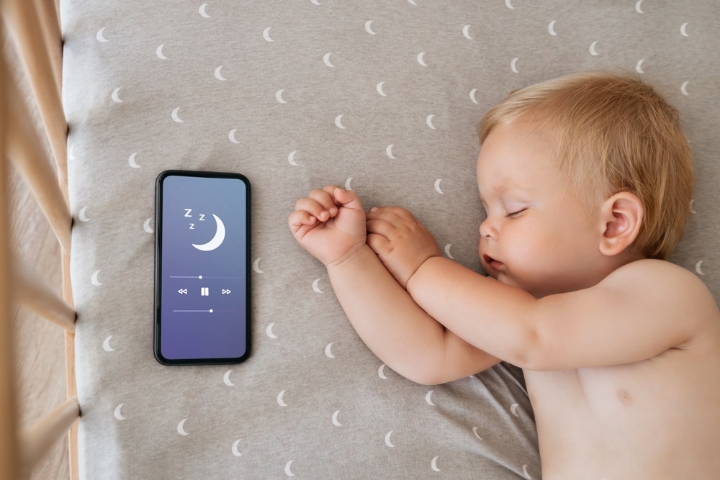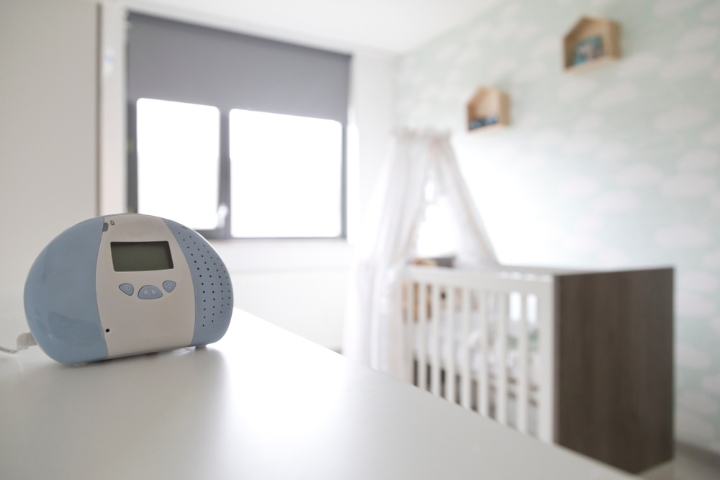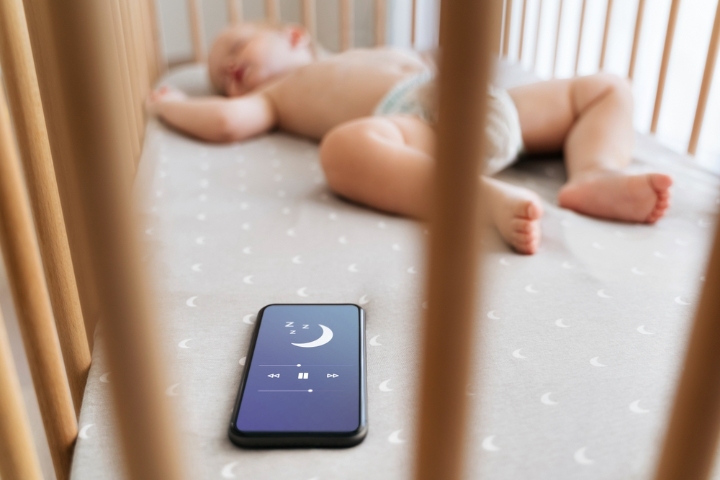
Image: Shutterstock
When it comes to helping little children sleep peacefully, white noise has become a popular tool among parents. But what exactly is white noise, and how does it aid in promoting better sleep? In this informative article, we will explore the concept of white noise, its benefits for babies , and discuss various types of noises that can assist in creating a soothing sleep environment. So, if you’re a parent seeking solutions to improve your child’s sleep routine, keep reading to discover the wonders of white noise and its sleep-inducing capabilities. Read on!
Understanding White Noise
Image: Shutterstock
White noise is a type of sound that contains all frequencies audible to the human ear in equal amounts. It is a continuous, steady sound that effectively masks other disruptive noises, creating a soothing and calming environment. White noise machines or apps produce a consistent sound that mimics this gentle background noise, helping to drown out sudden or disturbing sounds that may startle or disrupt your child’s sleep.
Benefits Of White Noise For Babies And Children
Image: Shutterstock
1. Promotes Sleep Onset
The gentle and consistent sound of white noise can serve as a sleep cue for babies and children, signaling their brains that it’s time to rest. It can help create a familiar and comforting environment, facilitating easier sleep onset and potentially reducing the time it takes for them to fall asleep.
2. Blocks Distractions
White noise acts as a shield against external noises that might otherwise disrupt your child’s sleep. It helps block out sounds from the household, traffic, or other sources, allowing your little one to sleep more soundly without being easily awakened by sudden noises.
3. Enhances Sleep Continuity
Image: Shutterstock
By creating a steady background sound, white noise helps mask intermittent sounds that may disrupt sleep continuity. It can assist in preventing your child from waking up during the lighter stages of sleep, leading to longer and more restful sleep periods.
4. Soothes Anxiety
White noise has a calming effect on babies and children by providing a consistent and predictable sound that can help reduce anxiety and promote relaxation. It can be especially beneficial for those who are easily overstimulated or have difficulty settling down to sleep.
5. Transition Aid
Image: Shutterstock
White noise can serve as a helpful transition tool during sleep transitions, such as naptime or bedtime. The consistent sound can provide a familiar and comforting cue that signals to your child that it’s time to relax and prepare for sleep. It can be especially beneficial during travel or when adjusting to new sleep environments, helping to create a sense of familiarity and ease the transition process.
Types Of Noises For Better Sleep
1. Nature Sounds
Image: Shutterstock
The soothing sounds of nature, such as gentle rain, ocean waves, or rustling leaves, can create a tranquil sleep environment for your child. These natural sounds often have a rhythmic quality that promotes relaxation and serenity.
2. Womb Sounds
Babies are accustomed to the comforting sounds they experience in the womb, such as the mother’s heartbeat or blood flow. Replicating these sounds through white noise can provide a sense of familiarity and security, promoting a more peaceful sleep experience.
3. White Noise Variations
Alongside traditional white noise, there are variations that mimic different environments or frequencies. Pink noise, for example, emphasizes lower frequencies and may have a deeper, more soothing effect. Brown noise, on the other hand, emphasizes even lower frequencies, resembling the sound of a gentle waterfall.
4. Lullabies And Soft Music
Image: Shutterstock
Soft, gentle lullabies or instrumental music can be another effective way to create a calming sleep environment. Many white noise machines or apps offer pre-programmed lullabies or allow you to play your own soothing music to help your child drift off to sleep.
Introducing White Noise Safely
While white noise can be a valuable tool for promoting better sleep, it’s important to introduce it safely and in moderation. Here are some guidelines to keep in mind:
1. Volume And Distance
Set the white noise machine or app at a volume that is comfortable and not too loud. Place it at a safe distance from your child’s crib or bed, ensuring it is not too close to their ears.
2. Consistency
Image: Shutterstock
Establish a consistent routine by using white noise constantly during sleep times. This helps your child associate the sound with sleep and creates a predictable sleep environment.
3. Gradual Transition
If you decide to introduce white noise, start by gradually incorporating it into your child’s sleep routine. This allows them to become familiar with the sound and adjust gradually.
White noise can be a valuable aid in creating a peaceful sleep environment for babies and children. It promotes sleep onset, blocks distractions, enhances sleep continuity, and soothes anxiety. By using various types of white noise, such as nature sounds or womb sounds, you can customize the sleep environment to suit your child’s preferences. Remember to introduce white noise safely, maintaining a comfortable volume and distance. With the help of white noise, you can create a soothing and calming sleep sanctuary, paving the way for better sleep for your little one. Sweet dreams to your little angel!


















